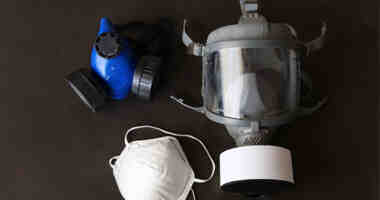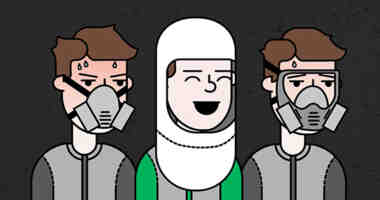
Temperature in high heat environments is difficult to manage as the heat must be present to carry out the work, in these situations, PPE is essential.
Respiratory Protection
Those working in industrial environments navigate multiple hazards every day. Some hazards can be mitigated through engineering and administrative controls, and others through personal protective equipment (PPE). However, the temperature in high heat environments is very difficult to manage as the heat must be present to carry out the work. In these situations, PPE is essential, adding to the difficulty of regulating body temperature which can lead to some very serious health risks associated with heat stress.
Identifying heat stress at work
As the body grows warmer, blood flow is increased to the skin in order to sweat and cool the body down. PPE can create a barrier for this process which prevents sweat evaporating from the skin, making it difficult for the body to regulate its temperature.
There are a few physiological and behavioral indicators to look out for that suggest the operator is suffering the effects of heat stress. If you are working in an environment that it is known there is an increased chance of heat stress, it is important to be familiar with the following indicators to ensure operator safety.
Symptoms can include: fatigue, headaches, nausea, dizziness, fainting, clammy/cold/pale skin, muscle cramps, weak or fast pulse, excessive sweating, and lack of alertness.
Effects of heat stress
If operators fail to recognize these symptoms when they are occurring and continue to operate as normal, they can put their health at serious risk. Heat stress can quickly progress to heat exhaustion which is the body’s response to excessive dehydration and loss of electrolytes. This can then lead to heat stroke where symptoms worsen, and the operator can experience seizures or coma. The effects of this can cause permanent disability or in some instances be fatal if medical treatment is not provided immediately.
Lack of alertness due to heat stress can also lead to increased likelihood of accidents. The Occupational Safety and Health Administration (OSHA) found operators in temperatures exceeding 80°F make on average 5 mistakes an hour, and 19 mistakes an hour after three hours. Heat stress has also been cited as one of the biggest contributing factors in preventable accidents at work with the construction industry accounting for more than 40% of heat related worker deaths across the US.
Reducing the risk
In some instances it is feasible to change work practices, such as providing shade and hydration, increasing breaks, working outside of the sun’s most intense times and wearing lighter or more breathable PPE to reduce the effects of heat stress on workers. However, there are many jobs such as foundry workers, power plant operators, and welders that simply cannot avoid the heat as it is ingrained in the work and PPE is required for the operator’s safety. One simple change however that can make a huge difference is through reconsidering the type of respiratory protection being used. In many of these settings, tight-fitting respirators are already being worn in addition to face shields and fire-retardant clothing. All of this makes the operator warmer, causing breathing difficulties and increasing the likelihood of heat stress being experienced.
Loose-fitting powered air purifying respirators can change user's experience of heat considerably. Although the air that is supplied to the user is the same temperature as the ambient air, the user feels considerably cooler because the air is moving, similar to the effects of a fan in a room. The fan is not making the room any colder, but the air that is moving past the person is moving the evaporated heat molecules off of our bodies faster, which makes us feel cooler. This is the same concept with the PPE. As the powered air enters the user's breathe zone and is dispersed over their head and upper body, sweat is moved away from them, making the user feel considerably cooler. First and foremost this can have a huge impact on operators’ safety, but with increased comfort operators are able to work more efficiently and effectively which leads to reduced fatigue and greater productivity.
If you’re having trouble with heat stress at your work, then it might be time to consider using alternative PPE that supports all aspects of operator safety, not just what is needed for compliance.




